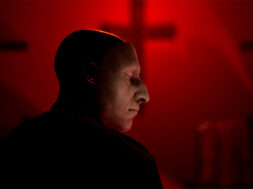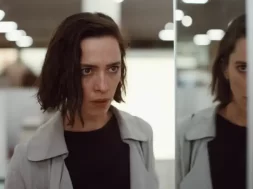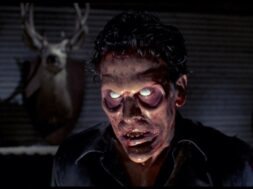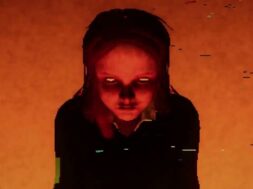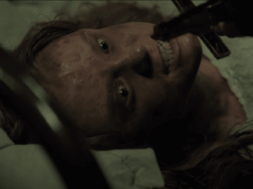Kicking off the Halloween season, five HD digitally remastered cult horror classics--as voted online by fans–will be coming to the big screen as part of the “Bloody Disgusting Presents Retro Nightmares” Cinema Series this fall: The House on Sorority Row, Amityville: The Evil Escapes, Amityville: It’s About Time, Sweet Sixteen, and The Convent.
First up in the series is the underseen slasher The House on Sorority Row, playing in theaters on September 27, 2018.
At first glance, 1983’s The House on Sorority Row follows in the footsteps of slasher classic Black Christmas. Just before their college graduation blowout party is set to begin, a group of sorority sisters enact one final prank only for it to go horrifically awry. Their party turns nightmarish as they’re stalked and killed one by one. Though it does draw heavy influence from films that came before it, The House on Sorority Row offers a lot of fun surprises and is one of the more underappreciated slashers of the ‘80s.
Writer/director Mark Rosman spent time working as Brian de Palma’s assistant director on Home Movies prior to making his feature debut with The House on Sorority Row. His work with de Palma no doubt affecting his direction on this slasher, with a lot of camerawork bearing similarities to the auteur. Though there’s a lot of comparisons between Rosman’s film and Black Christmas, he also drew from films like Les Diaboliques when crafting the suspense. His love of black and white thrillers of the ‘60s is most obvious in the opening scene, a monochromatic flashback that plays a vital role in the character motivations of a few characters.
Moreover, Rosman didn’t care for the traditional slasher trope that the killer’s favored victim was the innocent female. Instead, he made this sorority sisters culpable. The way that most of the characters responded to the prank gone wrong that resulted in a death meant that the seven central characters deserved some level of punishment for their crime. They weren’t innocent bystanders by any stretch.
Yet, save for the requisite mean girl, these characters were still pretty likeable too. Lead protagonist, Katey Rose (Katherine McNeil), is one of the more underrated final girls of the decade and clearly the one with the strongest moral compass of the bunch. Unlike Black Christmas, though, this group of sorority sisters spend a lot of time together with their friendships front and center and boys are an afterthought. The performances are all great, too, elevating this slasher above most released during this period.
The killer in this slasher is pretty creepy, made creepier by Richard Band’s atmospheric score. As for the kills, while most of them are fairly by the numbers, they deliver on the splatter. There’s no shortage of blood and gore, and one standout death is an all-timer.
It’s as the film barrels toward the third act that The House on Sorority Row departs from the seemingly standard slasher, delivering a fantastic final act that solidifies the film’s cult status. Rosman keeps the killer’s identity a mystery throughout, keeping the audience guessing as he spooks up effective stalking sequences. He plays with visuals in a unique way, too, with the story slowly growing from bright and cheerful to dark and disturbing as the body count piles up.
Between the inspired direction, a cast of talented ladies, fun kills, and one super creepy killer, The House on Sorority Row is a standout slasher released during the Golden Era of Slasher Films. It takes some surprising turns that you won’t see coming, and some you probably will, but it’s a fun slasher with a little more depth than most.
Tickets for The House on Sorority Row are on sale now at www.Retronightmares.com for theaters nationwide on September 27th, 2018. Special in-theater bonus content includes Attack Media’s comedic makeover of The House on Sorority Row (1983) in a five-minute rapid-fire remix presented as a classic ladies’ etiquette school recruitment video.
